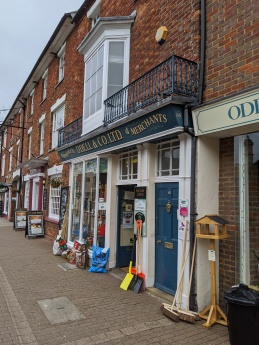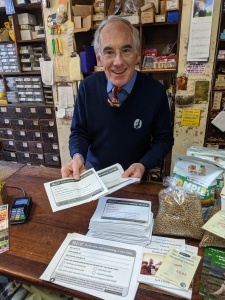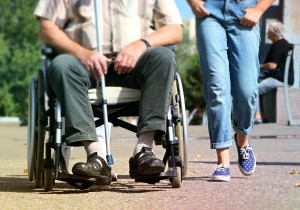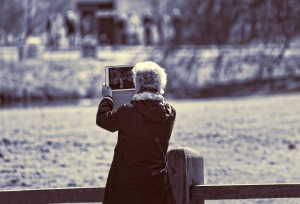Article By:
1Health and Wellbeing Priority Research Area, The Open University, Milton Keynes. Hannah.Marston@open.ac.uk – @HannahRMarston
2Centre for Innovative Ageing, Swansea University, Swansea. C.b.a.musselwhite@swansea.ac.uk – @charliemuss
3Independent Researcher, Manchester. www.robinhadley.co.uk/contact-me – @RobinHadley1
The scene
As the bells struck the stroke of midnight, ringing in 2020, citizens were smiling, pouring another glass of rosé, red wine or supping from their pint of Guinness from the confines of their local pub, house parties, restaurants, or clubs; while singing auld lang syne, shaking each other’s hands, giving a kiss on the cheek to the person next to them or a hearty smooch with a loved one. The biggest challenge of a generation ahead, at this moment in time in the UK was Brexit, little did we know this was about to be surpassed by something even bigger.
 Less than three months into the new year the UK and the majority of the world would be fighting COVID-19. This virus is causing havoc and it is not selective in whom it attaches itself too, whether you are poor, wealthy, a celebrity, an older adult, or a new-born child. However, the advice given, and how we are able to protect ourselves varies between wealth and crucially, age.
Less than three months into the new year the UK and the majority of the world would be fighting COVID-19. This virus is causing havoc and it is not selective in whom it attaches itself too, whether you are poor, wealthy, a celebrity, an older adult, or a new-born child. However, the advice given, and how we are able to protect ourselves varies between wealth and crucially, age.
Late in the afternoon of the 16th March, 2020 the UK Government advised that individuals and communities across the country not to undertake unnecessary forms of socialising such as attending a theatre production, drinking a pint or gently sipping a gin and tonic in one’s local, mass gatherings culminating in sports events – the premiere league, super league, the six nations and the London marathon have either been put on hold or will be in the coming days and weeks.
Citizens of the UK and worldwide have been informed by their respective governments and law enforcement agencies not to take unnecessary activities. In some instances, curfews have been implemented with the threat of fines and/or imprisonment for breaching those controls.
Across the UK, it has been mooted that citizens stay indoors and work from home. Students at various levels of the British education system are worried about classes, and upcoming examinations. Business and industries such as airlines and hospitality could go bust within a matter of weeks or months. Nevertheless, what is happening on the ground, in the communities surrounding our towns and cities? How are the residents in these various geographically and at times challenging locations responding? What is happening to the individuals which make up the myriad of communities, formed of intergenerational populations, and what are the potential impact(s) both from a positive and negative standpoint to isolation?
We know that mobility is important for life. People who have to reduce mobility because of changes in health or cognition lament the ability to go places, to see the world going on around them, and are often as a huge disadvantage in terms of accessing shops, services and other opportunities. In research Charles Musselwhite has carried out, older people’s mobility is linked not just to destination, though that is important, but to a sense of identity, independence and freedom. Additionally, people like to get out and connect with their local world and to pass the time of day with others. This is an important way of checking how one fits into the world. What if people can’t do those everyday simple acts? Measures to stem the virus by putting citizens in lock-down are going to have psychological effects on a usually highly mobile population.
 Technology can help, if people have access to it and know how to use it. Between 2015 and 2017 the Technology In Later Life (TILL) study was conducted by a team of researchers from the UK and Canada, with the aim to understand the use, perceptions and impact(s) of technology by older adults aged 65+ years living in both urban and rural communities. Technology complements day-to-day activities, leisure (e.g. videogames, streaming music and TV) (Genoe et al. 2018), holidays (e.g. online booking of hotels, travel) and maintaining social connections via social media platforms (e.g. Facebook) as well as communication platforms (e.g. What’s App, Viber).
Technology can help, if people have access to it and know how to use it. Between 2015 and 2017 the Technology In Later Life (TILL) study was conducted by a team of researchers from the UK and Canada, with the aim to understand the use, perceptions and impact(s) of technology by older adults aged 65+ years living in both urban and rural communities. Technology complements day-to-day activities, leisure (e.g. videogames, streaming music and TV) (Genoe et al. 2018), holidays (e.g. online booking of hotels, travel) and maintaining social connections via social media platforms (e.g. Facebook) as well as communication platforms (e.g. What’s App, Viber).
The TILL study suggested older people balance the facilitators of technology use (i.e. sharing of information and feeling secure) against the detractors of technology (i.e., feelings of apprehension of use, privacy, security). Marston and colleagues (2019) offered several recommendations that included the need of positive promotion of technology, focusing on the positive opportunities to improve one’s health and wellbeing, creating peer support networks in relation to learning new technologies and how intergenerational relationships can be enhanced through technology.
 In light of COVID-19’s global impact on countries and communities alike, various technology devices will and can provide a basis for maintaining social connections with friends, family, social networks and/or the wider community. The evidence from the TILL study (Marston et al. 2019) reported those who already have a social media account such as Facebook, could still chat to their friends. For those that did not have a social media account – and this includes both young and older adults – a smartphone device with communication tools (App’s) such as What’s App, had multiple ways of maintaining contact.
In light of COVID-19’s global impact on countries and communities alike, various technology devices will and can provide a basis for maintaining social connections with friends, family, social networks and/or the wider community. The evidence from the TILL study (Marston et al. 2019) reported those who already have a social media account such as Facebook, could still chat to their friends. For those that did not have a social media account – and this includes both young and older adults – a smartphone device with communication tools (App’s) such as What’s App, had multiple ways of maintaining contact.
Individuals living in rural communities will have to become accustomed to integrating various technology devices and associated tools and platforms such as Skype or Facebook into their lives. Subsequently, this will facilitate communication with loved ones who reside nearby and far away.
Action by local residents

Photograph taken by H.R. Marston.
Social media platforms such as Facebook can offer support for communities in times of crisis, such as COVID-19. For example, in the last 24-72 hours a private Facebook group has been created for residents in Stony Stratford a town on the outskirts of Milton Keynes. Hannah Marston moved to Stony Stratford in June 2019 partly for the community atmosphere and activities that are ongoing throughout the year.
The Stony Stratford residents’ Facebook group (currently 415 members) enables information to be shared across the community. Therefore, residents who may get COVID-19 are able to access support (e.g. groceries, collection of prescriptions), while also ensuring the most vulnerable can be cared for. Additionally, this group offers its members a point of contact for sub-groups within this particular group; consisting of various streets (named/highlighted) which already have an existing communication/What’s App group for communication and sharing information. Each existing What’s App groups has a detailed/specific point of contact (name of the person), which in turn may assist the respective residents to communicate within this digital connectivity neighbourhood.
In some instances, some streets already have existing What’s App groups which are used

Photograph taken by H.R. Marston. Permission granted by Mr D. Odell.
to keep one another up to date with information and support. For example, information such downloadable leaflets on self-isolation has been shared by group members. Paper versions of this advice are also available from Stony Stratford’s high street general store, Odells.
The connections don’t always have to be linked to local communities Lucy Burke (@LucyBurke1992), on Twitter, put together a wonderful list of free activity to get involved with at distance. This includes The Berlin Philharmoniker archive of over 600 concerts that can be streamed free for 30 days into people’s homes or the Metropolitan Opera who stream a different opera nightly for no charge.
All this requires people to be online and connected to technology. While many individuals, business and companies are sharing activities online, many older people do not have access to the Internet. In 2018, The Office for National Statistics (ONS) reported that 89% of adults in Great Britain use the Internet on a weekly basis, a 38% increase from 2006. Furthermore, in 2018 48% of adults aged 65 years and older used the Internet for online shopping, compared to a decade earlier when only 16% of adults reported shopping online (ONS, 2018). Currently, less than 50% of UK adults aged 75 years or older have access to the Internet: the digital divide. Debates over the last 20-30 years have noted the challenges and issues surrounding the digital divide (Hargittai, 2003; Compaine, 2001; Zickuher, 2013; 2011). Nevertheless, in the case of COVID-19, there has been little information surrounding the concerns regarding of those who are not online or who are reliant upon the Internet such as disabled adults.
Disability covers a broad spectrum and the Office for National Statistics noted there were over 10M (78%) of adults with disabilities using the Internet (ONS, 2019). For many disabled adults the Internet is a lifeline through enabling day-to-day activities (e.g. online banking, shopping) as well as maintaining social connections with friends and family.
 What we need to keep in mind is, those citizens who are users of the Internet, old or young, have an additional resource for maintaining social connections. Consequently, they have the capacity for reducing the risk of loneliness and social isolation that are important to one’s health and wellbeing. While those who do not use the Internet, may have access to a telephone and/or mobile phone which in turn will offer an alternative means of communication. However, using a telephone or a mobile phone does not facilitate nor replace the fact seeing a loved one’s face is important.
What we need to keep in mind is, those citizens who are users of the Internet, old or young, have an additional resource for maintaining social connections. Consequently, they have the capacity for reducing the risk of loneliness and social isolation that are important to one’s health and wellbeing. While those who do not use the Internet, may have access to a telephone and/or mobile phone which in turn will offer an alternative means of communication. However, using a telephone or a mobile phone does not facilitate nor replace the fact seeing a loved one’s face is important.
COVID 19 and Childlessness
The COVID 19 virus is the cruellest stress test of institutional and individual health and social care activities. Institutionally, the health and care sectors rely heavily on adult family members. A fact not lost on Jeremy Hunt the former Secretary for Health and Social Care when he spoke about ‘A wholesale repairing of the social contract so that children see their parents giving wonderful care to grandparents – and recognise that in time that will be their responsibility too’ (Hadley, 2015). Although, adult children provide most informal care for an ‘oldest-old’ relatives, childless adults are 20%–40%more likely to provide support than non-childless adults (Pesando, 2018, Hadley, 2019).
The ‘childless’ are a diverse group and there are many reasons why a person is ageing-without-children: choice, class, child bereavement, economics, education level, gender, infertility, family break-up, relation skills and many more (Hadley, 2018). The older childless are a hidden but significant population with a current estimated population of one million people aged 65 and without an adult child to support them in the UK (Beth Johnson Foundation/Ageing Without Children, 2016). That figure is forecast to increase to over two million by 2030 (McNeil and Hunter, 2014). The older childless tend to have smaller social networks than equivalent aged parents. Accordingly, they have reduced capacity to access informal care. Ageing without children is not a disadvantage when health is good; it may become a problem when they become frail, ill, or lose their independence. For example, research has shown the childless, unmarried, or widowed access formal care at younger ages and at lower levels of illness than parents have (Albertini and Mencarini, 2014).
 The recommendation to self-isolate has immediately raised questions for those with strong intergenerational ties. For example, in addition to social interactions many grandparents perform grandchild care duties pre- and post- nursery and school. Moreover, the ‘don’t travel/lockdown/self-isolate’ mantra means that many older parents whose adult children work and live long distances away are effectively ageing-without-children. Consequently, there has been an increase of retaining social contact through use of apps such as Facebook groups. However, in the case of community pages care must be taken not to exclude those who do not have children or are functionally childless. For example, grandparenthood is a social currency that non-grandparents cannot access and involuntary childless people may be reminded of what they missed both in mid- and later –life. For example, one recent paper described a participants’ reaction to social media posts, ‘The only time I ever think about what I might have missed out on is when I see people putting comments or pictures of their grandchildren on Facebook’ (Hadley, 2018, pg. 73).
The recommendation to self-isolate has immediately raised questions for those with strong intergenerational ties. For example, in addition to social interactions many grandparents perform grandchild care duties pre- and post- nursery and school. Moreover, the ‘don’t travel/lockdown/self-isolate’ mantra means that many older parents whose adult children work and live long distances away are effectively ageing-without-children. Consequently, there has been an increase of retaining social contact through use of apps such as Facebook groups. However, in the case of community pages care must be taken not to exclude those who do not have children or are functionally childless. For example, grandparenthood is a social currency that non-grandparents cannot access and involuntary childless people may be reminded of what they missed both in mid- and later –life. For example, one recent paper described a participants’ reaction to social media posts, ‘The only time I ever think about what I might have missed out on is when I see people putting comments or pictures of their grandchildren on Facebook’ (Hadley, 2018, pg. 73).
Many citizens in society, who do not have easy access to the Internet and are reliant upon their friends and family members for support. In the current situation where the advice is not to congregate in large gatherings and to practice social distancing, this is worrying and again raises the possibility of increased stress on people’s mental health. In this time of crisis, what should also be noted is the childless population in all societies may have a further reduced social network to call upon. At whatever age/stage of adulthood childlessness brings its own barriers and concerns that need to be recognised. Further work is needed, not only in relation to the use of technology but also from a wider sociological standpoint.
Finally, we are reminded the technology is only one way of staying connected. Charles Musselwhite’s work with older people showed how important a view from a window is for people, to stop, to ponder, to question and to foster identity. The view doesn’t have to be amazing or stunning, they might be things we would traditionally associate with being unimportant or even ugly, for example TV or telephone masts. What is more important is that the view contains both expected changes, such as the variations associated with the seasons, and a rhythm between expected and non-expected happenings, which could be human – roadworks, for example, or natural, such as storms.
Looking ahead, could technology help access scenes that couldn’t be seen from the window? Webcams, so called windows-on-the-world technology, for instance offer potential. There is some interesting work already on this including a virtual “window to the outside world” by Gillian Dowds and colleagues, Lori Reynolds’ Virtual Nature Experience and the simple but effective Video Window by Bill Gaver. The views might not have to be exactly what is outside, maybe technology can help with passing views, as if at a train window on a journey, like happens at Scarlett House Care Home in the Cotswolds, UK.
Case study: The WI
Cities, towns and villages revolve around various activities, from attending weekly church services to attending the Women’s Institute (WI). The National Federation of Women’s Institutes (NFWI) is an organisation that has been going for 100+ years and is an organisation that at its heart is the ethos to muster and foster spirit within a sisterhood.
WI’s meet locally once a month and facilitates its members to come together, to share experiences and to learn from one another, while enjoying light refreshments. For many members, this leisurely activity is their only connection with like-minded women, and possibly their own access to socialising and communication. The WI has evolved – as its history demonstrates – but where does technology sit within this organisation? How do we keep people in these networks involved with one another during a lock-down? Is it even possible?
 Across Twitter and Facebook, there are many accounts and pages linked to regional federations and individual WI’s detailing the various activities and meet-ups. In 2017, the WI voted for one of two campaigns which included Keep micro plastic fibres out of our oceans and alleviating loneliness. A new study – ‘Technology, Engagement and Social Connectedness in the Women’s Institute (TESC_WI)’ aims to explore and understand the context, role and impact technology has on the WI, as well as on the lives of individual members. One of the aims of the study is to understand if by fostering and enhancing social connections of its members reduces loneliness. Another goal is to explore how the WI members embrace technology within their day-to-day lives, their community, and in their respective institution.
Across Twitter and Facebook, there are many accounts and pages linked to regional federations and individual WI’s detailing the various activities and meet-ups. In 2017, the WI voted for one of two campaigns which included Keep micro plastic fibres out of our oceans and alleviating loneliness. A new study – ‘Technology, Engagement and Social Connectedness in the Women’s Institute (TESC_WI)’ aims to explore and understand the context, role and impact technology has on the WI, as well as on the lives of individual members. One of the aims of the study is to understand if by fostering and enhancing social connections of its members reduces loneliness. Another goal is to explore how the WI members embrace technology within their day-to-day lives, their community, and in their respective institution.
Now more than ever, technology is going to potentially affect the lives of WI members, especially its members who do not have connection to the Internet, and possibly have to rely on fellow members to relay information. Members of the NFWI are active, and as already noted, being a member of a local WI is a lifeline for some. On the 16th March 2020 a letter was published by the Chair of the NFWI detailing the policies and practicalities associated to COVID-19. In this letter the Chair of the NFWI acknowledged how members were known for being supportive and keeping in contact with each other. She called on members to keep up to date via various channels as well as keeping in touch with fellow residents in our respective communities by offering support where needed, “or keeping in touch by phone or video call will make a world of difference to them and shoe them that someone cares.” (Stubbings, 2020).
This is a key example of the spirit and ethos that is fostered within the WI, and in the stance of the WI and its respective members. The use of technology by the WI, be-it via social media platforms, a smart phone, email or picking up the telephone illustrates the impact that technology has already had on this national Charity.
A dogs’ tale

We have been hearing daily updates from the UK Government as well as hearing what actions other countries governments are taking via the diverse ranges od news sources and types of outputs. However, we would like to draw your attention to Bertie a 4 year-old Lakeland terrier (@bertie_lakeland) who resides in the Cheltenham area of the UK and has over 20K followers on Twitter. This account is updated daily in a bid to share the adventures of this fine four-legged terrier, but initially this account was created to highlight this dying breed of dog.

Berties’ owners – Phil and Yvette, manage the twitter account. Over the last three years, they have come to realise their postings of Berties’ adventures bring some light relief, happiness and a smile to their followers. Recently Bertie has taken it upon himself to make some public service announcements in a bid to defuse panic buying and remind each other to be kind and to ensure our neighbours are safe and well.
Photographs from @bertie_lakeland highlight the reach these respective tweets have had to their followers in this precarious time. It should not be underestimated that many citizens with pre-existing mental health issues may start to experience greater anxiety, cabin fever and increased health related issues due to self-isolation. We have heard and read how there has been severe panic buying. Many older adults have tried to buy groceries, but the shop’s shelves were bare. There are many communities where old, young and middle-age live side-by-side and ensure each other are well. However, sharing contact details for a ‘just in case’ moment is a simple and effective way of offering support to one another.

Public service announcements, such as those from Bertie, are reaching communities and citizens not only across the UK but internationally. Bertie’s adventures continue to be shared and consequently, may bring some light relief and a smile to someone who maybe feeling a little low, overwhelmed and anxious about their own health and that of their family.
Likewise, we have not seen or heard about the prospective mental health issues arising from this pandemic, not only for those with pre-existing diagnosis but for those that do enjoy going to work, for those whose only contact and communication are with work colleagues. Equally, independent businesses are certainly going to be facing a testing time. Most significantly is the impact that COVID 19 crisis has on the future of individuals and the health and social care services.
A Baby Boom
Given how we are been informed to not undertake unnecessary travel, leisure activities or socialise, many of us will be clicking through our streaming services, rummaging around for the DVDs, assessing our provisions. But what are the chances of a second Baby Boom?
The last time society witnessed such a surge in births was after WW2, and this cohort of the population are now known as the Baby Boomers, born between 1946 and 1964. The behaviours and activities of this cohort been greatly documented (Whitbourne & Willis, 2006; Howe & Strauss, 1991; Jones, 1980).
But now that the UK and the world are edging closer to, if not already in lockdown, is there a high possibility of a post-COVID-19 baby boom? Already on Facebook, there has been a discussion on a thread amongst friends (Rotnem, 2020) about this very prospect and if so what would this cohort be called? One person suggested ‘Coronials’, while another suggested the term ‘Quaranteens’.
While these two suggestions may come across a little crass, untimely and irrelevant at what seems to be the start of a global, ever changing pandemic. Is it likely that a surge in birth rates could happen in the coming years? Only time will tell. If so, what kind of behaviours and cohort traits would this particular cohort have? Given how they will be born in the third decade of the 21st century and onwards, with technology a well-placed friend within their household; will they in adulthood, reflect and narrate their early years with their children, grandchildren and researchers, what it was like growing up in an environment of COVID-19? Will they reflect and narrate how their leisure activities, educations, social engagements and making friends was conducted through online forums, online games, will they speak fondly of interacting with jigsaws and their parents, and grandparents?
And what about the other existing cohorts in our society the Baby Boomers, Generation X, Millennials and Generation Z? What will come of their narratives and experiences documented in future research, their individual stories, of how they adapted to living in isolation, reconnecting with leisure activities from bygone times, not been able to physical touch and kiss a grandparent or parent? Bumping elbows as a way of greeting rather than shaking hands or kissing a cheek or two? Stories of panic buying, witnessing drones on the streets of Mediterranean cities, ghost trains into cities, and connecting with neighbours who in a previous time a nod of the head at best would have sufficed.
Summing up
As of late afternoon, on the 16th March 2020, the UK Government were advising its citizens to not undertake unnecessary activities and suggested leisurely activities such as those named at the beginning of this article should be reconsidered. We in the UK do not have law enforcement or the military patrolling the streets, nor do we have drones flying down and across our streets, parks and highstreets in a bid to identify citizens breaching curfews or making any unnecessary activities. However, we do not know what the coming hours, days, weeks or even months entail….
For many families there will be a concern about how to entertain children while also conducting and keeping up to date with schoolwork, their own respective work responsibilities, as well as financial worries. The Stony Stratford Coronavirus support group is one of many community created support groups across the Country that is available to offer support and assistance to those in my community. There is the strong likelihood that members of this support group and many others, will start to share various types of information, leisure activities and ways of alleviating boredom. This could include sharing recipes for home cooking, video/face time calls with each other, online book clubs, gaming, boardgames, study sessions, and positive approaches to mindfulness.
Hour by hour, news reports filter out across the myriad of channels, which add to the uncertainty of this precarious situation. Yet directives are stipulating increasing stringency as time goes by.
If we go back to the TILL study and the proposed recommendations by the research team coupled with this blog discussion, similarities can be seen and aligned to building and enhancing support networks. This in turn can lead to shared alternative activities and knowledge for residents. The Stony Stratford Coronavirus support group positively highlights how technology can be used and deployed in times of crisis and can be used to support residents with various needs, health complaints as well as maintaining a community mindset and ethos.
However, for those neighbours who are technologically unconnected, the use of a pen and paper to share a telephone number can still be positively distributed. At this moment in time, we need to ensure – aside whether one is old or young – that we are all there for one another. Consequently, the sense of feeling secure, by knowing that your younger or older neighbour is available to collect a prescription or collect groceries is imperative to maintaining an existing positive ethos.
What is clearly evident from COVID-19 is that life for many of us will never be the same again. Whether our (respective) Government directives are cranked up, or downgraded, we will all have a story or two to tell in the future.
